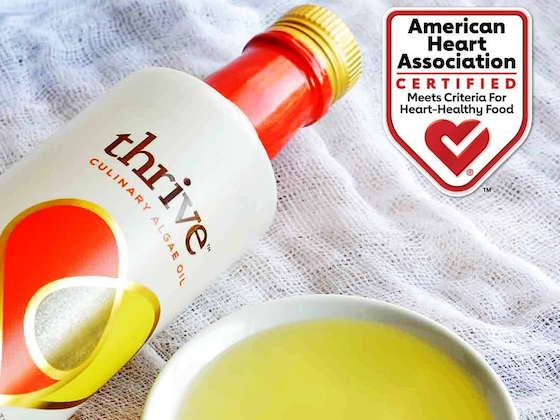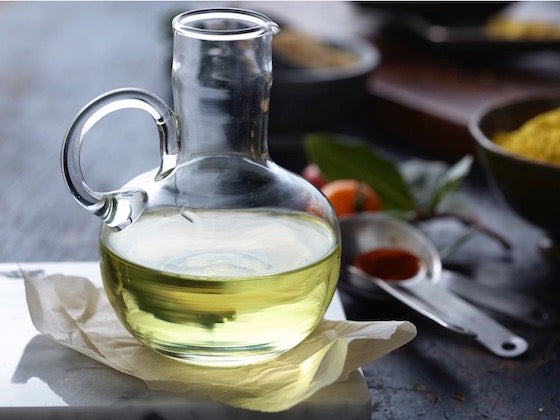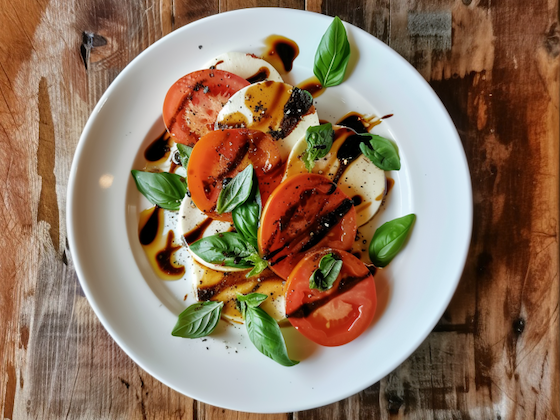Why Monounsaturated Fats Are Good For You
Good Fats Explained
Monounsaturated fats (MUFAs) are proven to be a critical component of a well-balanced and heart healthy diet.
On this page, we have collected the positions of some of the foremost experts in the country regarding heart health and dietary fats:
American Heart Association
Mayo Clinic
Dietary Guidelines for Americans 2020-2025
U.S. Food & Drug Administration (FDA)

Good fats demystified
MUFA: A good Fat
Oils are fats that are liquid at room temperature and are a major source of essential fatty acids and vitamin E.
It is well understood that fat is an important element of a healthy, balanced diet (among other benefits, fat is needed by the body to absorb critical vitamins).
The key is in the word "balanced": don't overeat fats, and when you do, try to consume as many "good fats" while limiting the fats to avoid.
On the left you find a simplified schematic of what are considered "good fats", and which fats to avoid.
Thrive™ Culinary Algae Oil has the highest level of monounsaturated fat, a good fat, and 75% less saturated fat than olive oil and avocado oil.
Their Position on Monounsaturated fat:
American Heart Association
Monounsaturated fats can help reduce bad cholesterol levels in your blood which can lower your risk of heart disease and stroke. They also provide nutrients to help develop and maintain your body’s cells. Oils rich in monounsaturated fats also contribute vitamin E to the diet, an antioxidant vitamin most Americans need more of.
AHA Recommendation: For good health, the majority of the fats that you eat should be monounsaturated or polyunsaturated. Eat foods containing monounsaturated fats and/or polyunsaturated fats instead of foods that contain saturated fats and/or trans fats.
The American Heart Association's Nutrition Committee strongly advises these fat guidelines for healthy Americans over age 2:
Eating between 25 and 35 percent of your total daily calories as fats from foods like fish, nuts, and vegetable oils.
Limiting the amount of saturated fats you eat to less than 7 percent of your total daily calories. That means if you need about 2,000 calories a day, less than 140 calories (or 16 grams) should come from saturated fats.
Limiting the amount of trans fats to less than 1 percent of your total daily calories. That means if you need about 2,000 calories a day, less than 20 calories (or 2 grams) should come from trans fats.
For good health, the majority of fats you eat should be monounsaturated or polyunsaturated.
Eating foods with fat is definitely part of a healthy diet. Just remember to choose foods that provide good fats (monounsaturated and polyunsaturated fats) and balance the amount of calories you eat from all foods with the amount of calories you burn. Aim to eat a dietary pattern that emphasizes intake of vegetables, fruits, and whole grains; includes low-fat dairy products, poultry, fish, legumes, non-tropical vegetable oils and nuts; and limits intake of sodium, sweets, sugar sweetened beverages and red meats.
Doing so means that your diet will be low in both saturated fats and trans fats.
Source: American Heart Association (link opens in new tab)
Their Position on Monounsaturated Fat:
Mayo Clinic
Monounsaturated fats are found in foods such as canola oil, peanut oil, olive oil, nuts and avocados. These foods have been shown to lower cholesterol levels, and increase your HDL (“good”) cholesterol, helping to keep your heart strong and disease-free.
Healthy monounsaturated fats also help to keep you satisfied for longer after eating — a great a benefit for those looking to lose a few pounds.
Choose mono and polyunsaturated toppings in your salad such as oil & vinegar dressing, nuts, seeds, olives, or avocado in place of high saturated fat foods like cheese, bacon, and creamy dressings.
Monounsaturated fats provide the most health benefit, according to research, and are an important component of the heart-healthy Mediterranean diet, Dr. Nissen says. They are found in foods such as olive oil and sesame oil and in nuts such as almonds or walnuts. “There’s every reason to believe that the nuts that contain unsaturated fats like almonds and walnuts are a very healthy choice,” he says. But make sure they’re in their raw form. “Chocolate candy-coated nuts are not the way to go.”, Dr. Nissen says.
Source: Mayo Clinic (link opens in new tab)
Their position on monounsaturated fat:
Dietary Guidelines for Americans
Healthy intake:
Oils are fats that contain a high percentage of monounsaturated and polyunsaturated fats and are liquid at room temperature.
Although they are not a food group, oils are emphasized as part of healthy eating patterns because they are the major source of essential fatty acids and vitamin E. Commonly consumed oils extracted from plants include canola, corn, olive, peanut, safflower, soybean, and sunflower oils. Oils also are naturally present in nuts, seeds, seafood, olives, and avocados.
The fat in some tropical plants, such as coconut oil, palm kernel oil, and palm oil, are not included in the oils category because they do not resemble other oils in their composition. Specifically, they contain a higher percentage of saturated fats than other oils (see Dietary Fats: The Basics call-out box).
The recommendation for oils in the Healthy U.S.-Style Eating Pattern at the 2,000-calorie level is 27 g (about 5 teaspoons) per day.
Key nutrient contributions:
Oils provide essential fatty acids and vitamin E.
Considerations:
Oils are part of healthy eating patterns, but because they are a concentrated source of calories, the amount consumed should be within the AMDR for total fats without exceeding calorie limits. Oils should replace solid fats rather than being added to the diet.
Some evidence has shown that replacing saturated fats with plant sources of monounsaturated fats, such as olive oil and nuts, may be associated with a reduced risk of CVD. However, the evidence base for monounsaturated fats is not as strong as the evidence base for replacement with polyunsaturated fats.
Evidence has also shown that replacing saturated fats with carbohydrates reduces blood levels of total and LDL- cholesterol, but increases blood levels of triglycerides and reduces high-density lipoprotein-cholesterol (HDL-cholesterol).
Replacing total fat or saturated fats with carbohydrates is not associated with reduced risk of CVD. Additional research is needed to determine whether this relationship is consistent across categories of carbohydrates (e.g., whole versus refined grains; intrinsic versus added sugars), as they may have different associations with various health outcomes.
Therefore, saturated fats in the diet should be replaced with polyunsaturated and monounsaturated fats.
Shift to reduce saturated fats intake to less than 10 percent of calories per day:
Individuals should aim to shift food choices from those high in saturated fats to those high in polyunsaturated and monounsaturated fats.
Strategies to lower saturated fat intake include reading food labels to choose packaged foods lower in saturated fats and higher in polyunsaturated and monounsaturated fats, choosing lower fat forms of foods and beverages that contain solid fats (e.g., fat-free or low-fat milk instead of 2% or whole milk; low-fat cheese instead of regular cheese; lean rather than fatty cuts of meat), and consuming smaller portions of foods higher in saturated fats or consuming them less often. One realistic option is to change ingredients in mixed dishes to increase the amounts of vegetables, whole grains, lean meat, and low-fat or fat-free cheese, in place of some of the fatty meat and/or regular cheese in the dish.
Source: Dietary Guidelines for Americans, 2020-2025 (link opens in new tab)
Their position on monounsaturated fat:
U.S. Food & Drug Administration
The U.S. Food & Drug Administration (FDA) has approved the following qualified heart health claim:
Supportive but not conclusive scientific evidence suggests that daily consumption of about 1 1⁄2 tablespoons (20 grams) of oils containing high levels of oleic acid, may reduce the risk of coronary heart disease. To achieve this possible benefit, oleic acid-containing oils should replace fats and oils higher in saturated fat and not increase the total number of calories you eat in a day.
One serving of algae oil provides 13 grams of oleic acid (which is 13 grams of monounsaturated fatty acid.)
Source: Food & Drug Administration (link opens in new tab)















